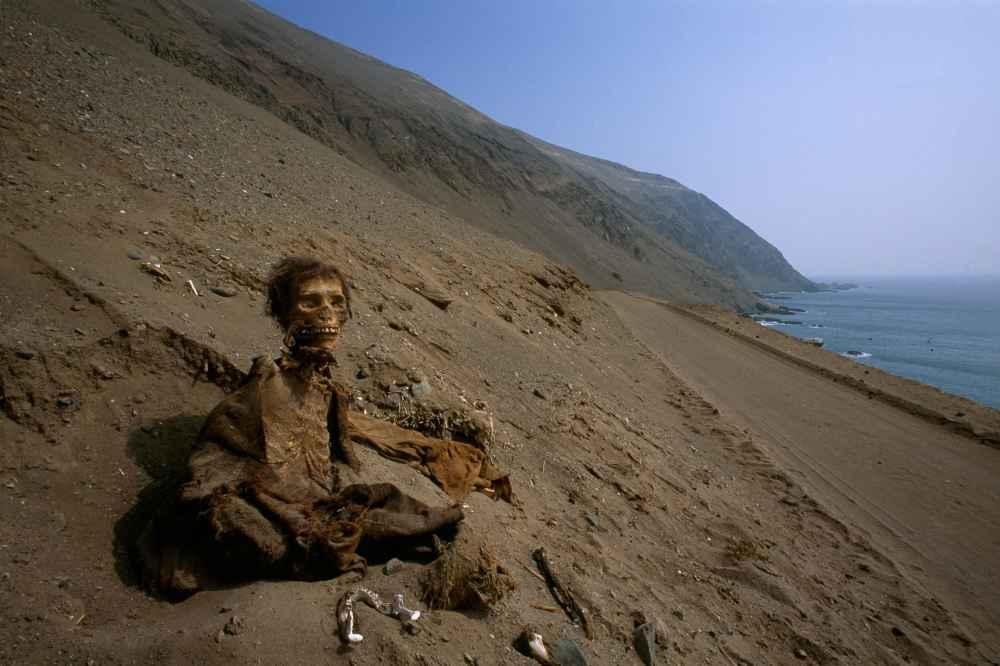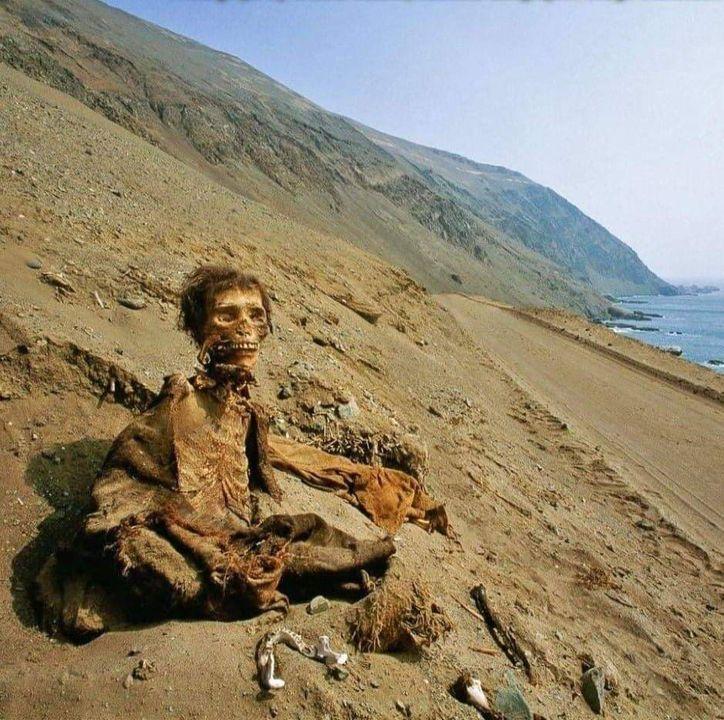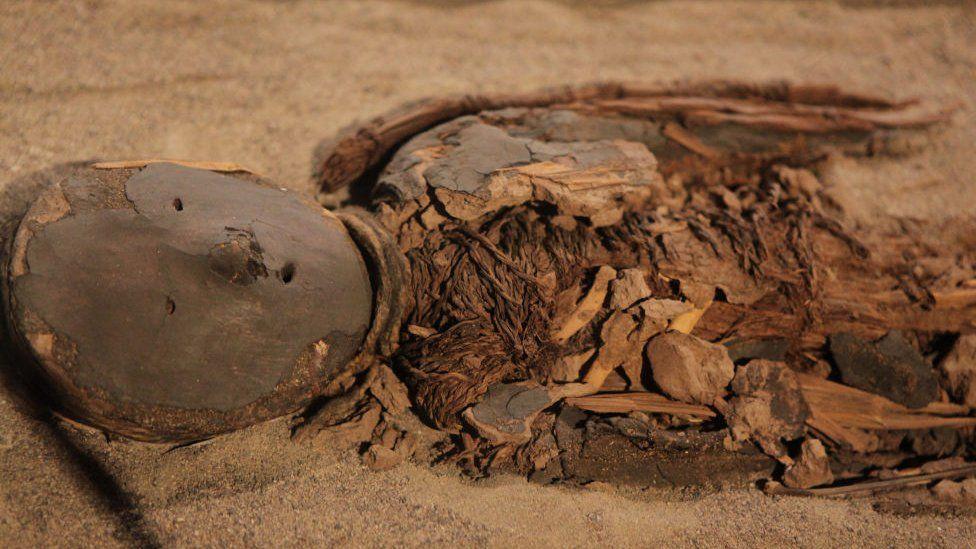
The Remarkable Unveiling: Perfectly Preserved Corpse from 5020 BC Discovered in Chile’s Atacama Desert.
The Remarkable Preservation of a 5020 BC Corpse in Chile’s Atacama Desert

In the arid expanse of Chile’s Atacama Desert, where rainfall is a rarity and the landscape stretches out in seemingly endless dryness, lies a discovery that has astounded archaeologists and scientists alike. It is a testament to the remarkable forces of preservation that nature can bestow upon the remnants of the past. This discovery, a long-buried corpse dating back to around 5020 BC, has retained not only its skeletal structure but also centuries-old skin, hair, and clothing.

The Atacama Desert, often regarded as one of the driest places on Earth, may seem an unlikely setting for such a find. However, it is precisely this extreme and relentless aridity that has played a pivotal role in the preservation of this ancient individual. The combination of low humidity, minimal rainfall, and the unique burial conditions have created an environment where decomposition is slowed to a crawl, allowing for the remarkable survival of biological material that would have otherwise vanished over time.
The discovery of this ancient corpse was nothing short of serendipitous. Archaeologists and researchers, exploring the remote corners of the Atacama Desert, came upon an unassuming burial site. Upon excavation, they uncovered a burial unlike any they had seen before. The individual, wrapped in layers of cloth and meticulously preserved, lay in a state of remarkable completeness.

To determine the age of the remains, scientists turned to radiocarbon dating. The results confirmed that the individual lived around 5020 BC, placing them squarely in the Neolithic period. This revelation immediately piqued the interest of archaeologists and historians, as the find offered a unique window into the lives and customs of ancient inhabitants of the region.
What sets this discovery apart is the level of preservation. The individual’s skin, hair, and clothing have survived the passage of millennia. This level of detail provides an unprecedented opportunity to study not just the bones of an ancient person but also their physical appearance, clothing style, and perhaps even their daily life.

The Atacama Desert has a rich history of human habitation dating back thousands of years. The discovery of this well-preserved individual sheds light on the practices and customs of the region’s ancient inhabitants. It invites questions about burial rituals, societal structures, and cultural beliefs of this prehistoric society.
Beyond the realm of archaeology, this discovery has captured the attention of scientists studying preservation techniques and the limits of what can be preserved by nature alone. It serves as a case study in understanding how environmental conditions can impact the preservation of biological material over extended periods.

In conclusion, the long-buried corpse preserved by the unforgiving aridity of Chile’s Atacama Desert is a testament to the marvels of nature and the surprises that our planet’s history can offer. It is a poignant reminder that even in the most inhospitable environments, traces of the past can endure, waiting to be unearthed by the curious and the diligent. As researchers continue to study this remarkable find, it promises to yield insights into a world long gone, enriching our understanding of the human journey through time.




